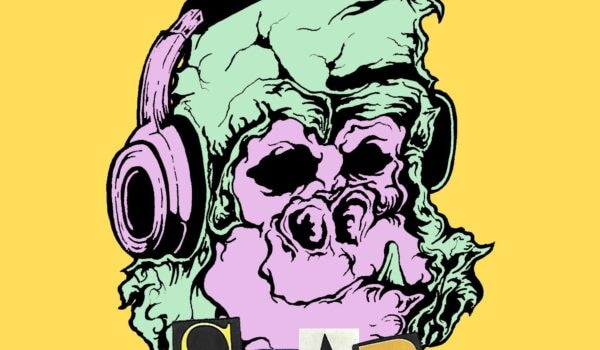So, February. Month of the two most important days in my life: valentine’s day and pancake day, each an opportunity to indulge in far too much chocolate. Also it’s the month of my birthday but that’s irrelevant. I’d say valentine’s day is perhaps more relevant to this month’s artist than pancakes, but, of course, feel free to draw your own conclusions.
My artist of the month this month is Edvard Munch. You know the Norwegian artist, famous for painting The Scream. When the first lockdown hit everyone was looking towards Hopper and Munch as an indication of how we felt during that period of isolation. Boy did we have a big storm coming. Anyway, let’s get on with the show, shall we?
Starting with some background is pretty essential when looking at the artwork Munch created over the course of his life. His childhood had an overbearing presence throughout all his work. Edvard was born in 1861 to a medical officer and doctor, and his wife, who was half his age. Edvard’s mother died of Tuberculosis when he was just seven, his favourite sister, Johanne Sophie, died of the same illness nine years later. Edvard missed a fair amount of school due to illness, the Munch children were entertained throughout their childhood by the gothic short stories of Edgar Allen Poe, you can, perhaps, see this influence in Edvard’s works.
According to Munch, his father’s raising of the children was overshadowed by his intense and morbid pietism, claiming that ‘from him [he] inherited the seeds of madness’. One of Munch’s younger sisters, Laura, was diagnosed with mental illness, his brother Andreas was the only sibling who married and he died shortly after the wedding. So, as you can see, a pretty traumatic childhood, it often inspired Edvard’s nightmares and visions that plagued him throughout his life.

So we’ll start by looking at The Scream. Yes, we all felt like screaming during the first lockdown, I wonder how we all feel like now. I, for one, am feeling a small glimmer of hope after recent announcements from Westminster, but I digress. The original name given to this piece was The Scream of Nature, Munch giving his explanation: he had been out for a walk at sunset when suddenly the setting sun’s light turned the clouds ‘a blood red’. He sensed an ‘infinite scream passing through nature’. There is something so inherently horrifying about this painting I think, more than the hellish background colours or the alarming, skeletal face of the central figure, stretched infinitely into an agonised cry. The distorted shapes and shadowy figures all contribute to this feeling that Munch is trapped in a nightmare that he can’t escape. The viewer has been invited to join him, and now we can no longer escape either. I don’t know about you, but The Scream is a picture that lives in my head ‘rent free’.
Onwards and upwards, right? Wrong. Perhaps you are unfamiliar with the rest of Munch’s works, he was certainly very prolific, preferring the medium of print, rather than painting. So we move on to talk about some of his prints.
A little ‘fun fact’ about Munch here: it is generally considered that Munch’s was so prolific due to his childhood trauma. Apparently he regarded each print he created as a sibling. Of course, needs must, and he had to sell his prints. Feeling like he lost a sibling each time he sold one of his prints, he created another, hence the several pieces we have of his work today.
Of course, February is the month of valentine’s day, so maybe we should talk a little about Munch’s romantic life and how it influenced his works. In 1899 Munch began an intimate relationship with Tulla Larsen, they travelled together and Larsen pressured Munch for marriage. However, Munch felt that, due to his distraught and turbulent childhood that he hated marriage and had no right to get married. During his relationship with Larsen his art entered a brighter more fertile period, he created works displaying young women without negative connotations.

In this painting Girls on the Bridge we see Munch’s signature expressionistic style of painting. The girls standing on the bridge seem to be the picture of innocence, one wearing white, the other two covering their heads. However, we do also see works by Munch that criticise women.
Love and Pain is a painting done by Munch in 1895, you’ll note that this is before he met Tulla Larsen, displaying that his feelings towards women were not tainted by his specific experience with her. The piece has also been given the title of Vampire, although it’s important to remember that this was not Munch’s originally intended title, and may not have been his intended interpretation.

Munch painted six different versions of this composition between 1893 and 1895, each depicting a woman with long hair either biting, or kissing a mans neck. Although Munch claimed the painting showed nothing more than a woman kissing a man’s neck, implications can be drawn. The image of a woman with long red hair is a common motif throughout Munch’s oeuvre, often it is depicted entangling and trapping a man within its locks. This painting and similar prints perhaps display Munch’s contempt towards romance and women.

He also created a painting entitled The Sin which many thought might be a portrait of Tulla Larsen, evoking their tumultuous relationship, however it’s later been found that it was a painting of a professional model working in Berlin. Nevertheless it still portrays women as tempting, and ‘sinful’, as the title would suggest. The image of the ‘femme fatale’ was popular across art and literature of the time.
So, I hope that this exposition of the dark and gloomy interior of Edvard Munch’s mind hasn’t offset the vibes of impending spring too much. We are leaving the winter months behind, birds chirp outside my window as I write this. We move forward into march, warmer, hopefully more of a happy tone as restrictions gradually lift. My advice to you would be: don’t think about The Scream too much, if you do perhaps consider painting. Also that women aren’t horrible seductresses, even ones with red hair.








Comments